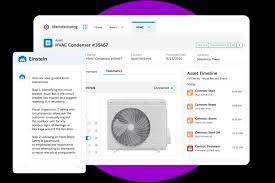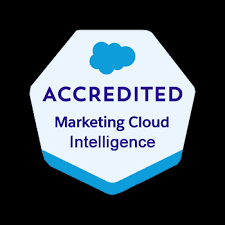Salesforce has unveiled Connected Assets, a robust suite of capabilities in Manufacturing Cloud, designed to offer manufacturers a comprehensive, real-time perspective on connected asset data. This includes data on service history, asset status, customer records, and telematics, allowing manufacturers to monitor asset health and performance while proactively addressing maintenance needs to reduce downtime and boost customer satisfaction.
Enhanced AI Capabilities for Connected Assets
Connected Assets integrates Salesforce’s advanced AI to empower teams with actionable insights. Sales, customer service, and field teams can now receive real-time alerts and quickly access asset history and health, enabling faster, data-driven support and the delivery of more personalized offers. AI-driven insights and recommendations based on asset condition, service history, and performance data enhance the ability of manufacturers to predict maintenance needs and provide proactive support, including on-site recommendations to field technicians.
Innovative Features for Optimized Asset Management
- Unified Data Management: The Data Cloud for Manufacturing brings together structured and unstructured data from diverse sources, like telematics and ERP systems, into a single model. This centralized view helps teams understand and respond to asset performance trends over time.
- Comprehensive Asset View: With Connected Digital Asset, teams have a complete view of each asset, including real-time telematics data, allowing them to make more informed decisions. For instance, a sales rep can proactively reach out to a customer when their equipment nears the end of its lifecycle to offer an upgrade.
- Asset Health and Performance Monitoring: Asset Performance Monitoring allows service teams to assess key performance indicators like asset condition and operating status, facilitating proactive alerts to prevent downtime.
- Real-Time Telematics Data: The Actionable Telematics Framework provides manufacturers with real-time insights from telematics data such as location and diagnostics. For example, service teams can set alerts for high fuel consumption, prompting automated customer notifications and service scheduling.
- Proactive Maintenance: Asset Service Prediction, part of Salesforce Field Service, delivers AI-driven forecasts of maintenance needs, reducing breakdowns and unnecessary site visits by providing technicians with real-time, actionable insights.
- AI-Powered Asset Insights: Asset Service Summary and Asset Telemetry Summary, powered by Einstein AI, offer a snapshot of asset health, generating insights from sensor data and creating automated work orders or identifying sales opportunities for accessories that enhance performance.
Salesforce Perspective
Achyut Jajoo, SVP and GM of Manufacturing and Automotive, states, “The manufacturing industry is embracing a historic transformation toward AI-enabled modernization. Connected Assets and our sector-specific AI tools in Manufacturing Cloud empower our customers to lead with improved customer experiences, optimized asset performance, and new revenue-generating services. With Agentforce, our customers will soon be able to leverage autonomous agents to monitor connected asset data at scale, enabling them to focus on strategic, high-value initiatives.”
Real-World Application
Kawasaki Engines exemplifies Connected Assets in action, using Manufacturing Cloud to enhance customer relationships by offering proactive support and minimizing equipment downtime. “Salesforce’s Connected Assets will enable us to deliver exceptional service, keeping our customers satisfied and our products operating efficiently,” says Tony Gondick, Senior Manager of IT Business Strategy at Kawasaki Engines.
Extending Across Industries
Beyond Manufacturing Cloud, Connected Assets is also being introduced to Salesforce’s other industry clouds, such as Energy & Utilities, Communications, and Media, allowing a wide range of sectors to tap into the benefits of connected asset management, minimize downtime, and generate new value.
🔔🔔 Follow us on LinkedIn 🔔🔔













